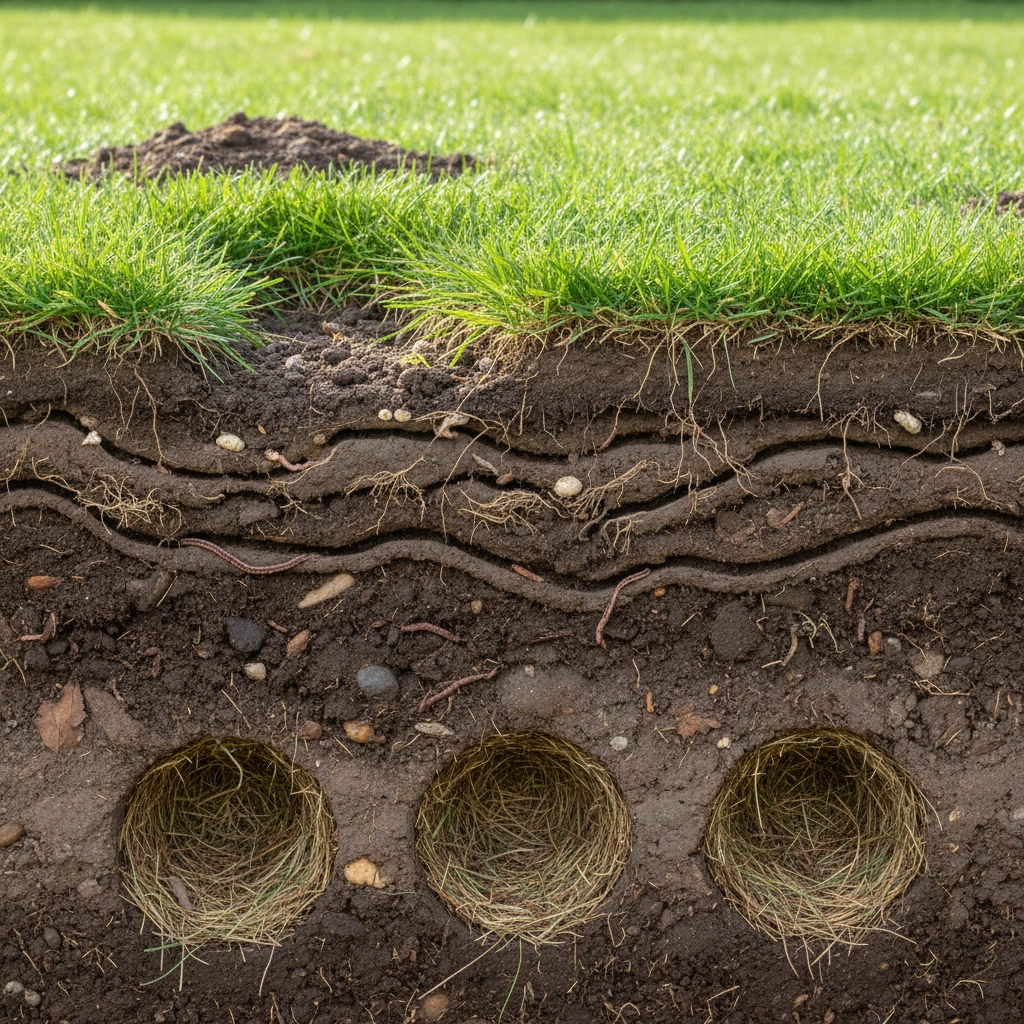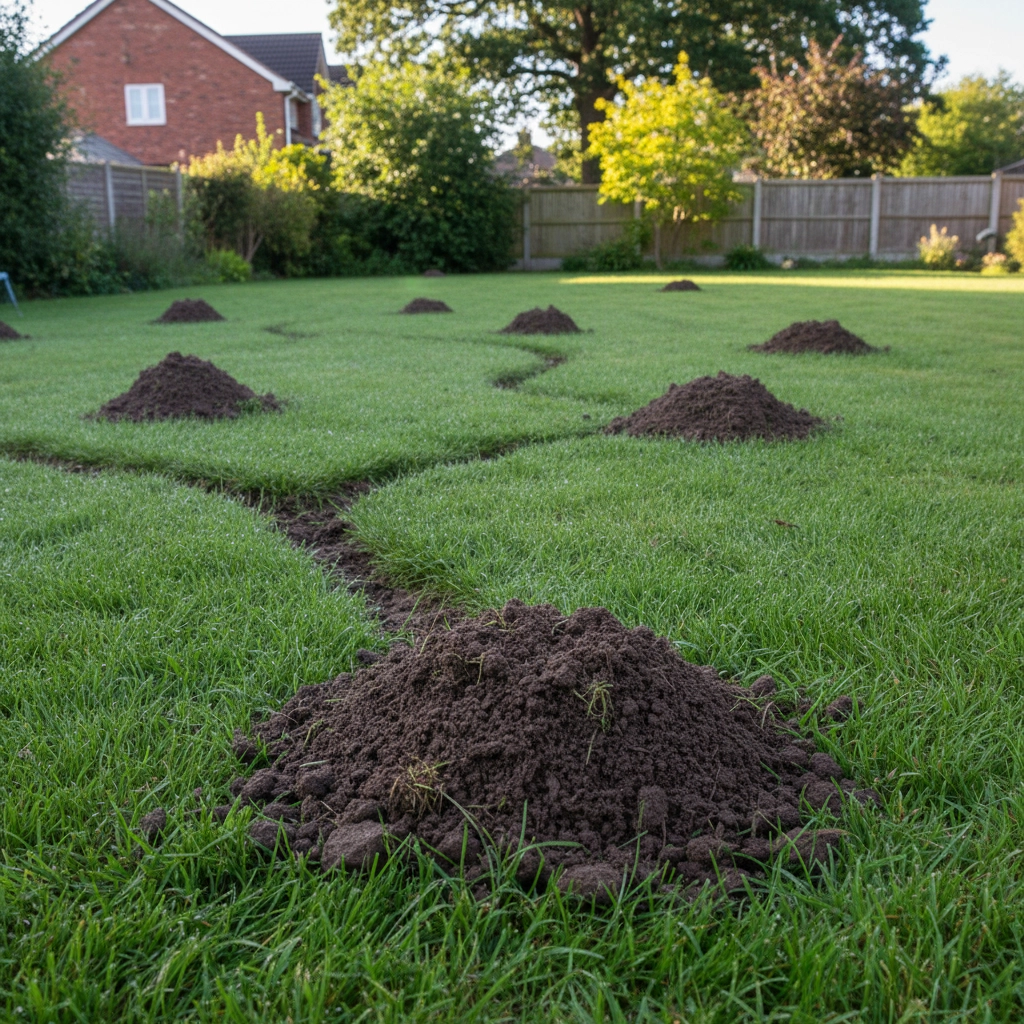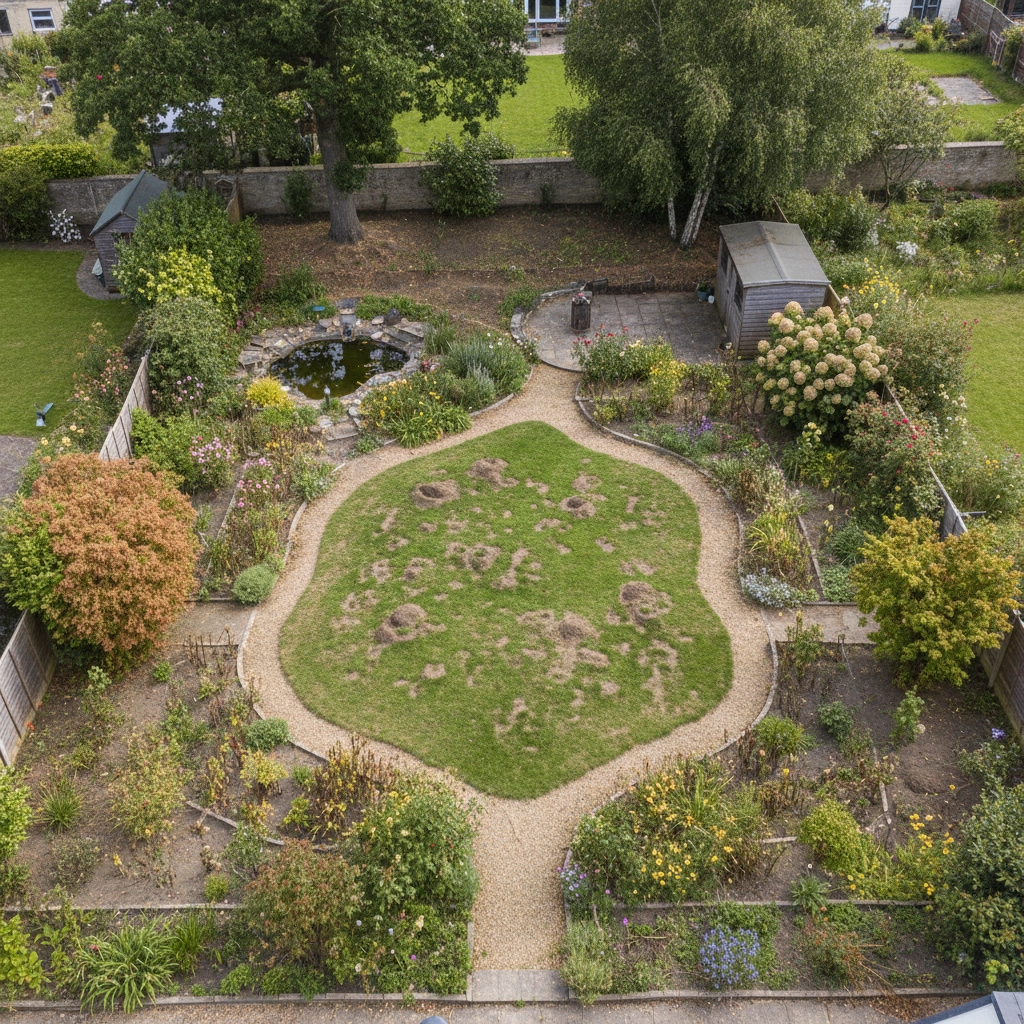If you've ever stepped onto your perfectly manicured lawn only to find a network of raised ridges and mysterious molehills scattered across your garden, you're not alone. Moles are among the most persistent garden pests across the Scottish Highlands, and understanding exactly how deep they dig is crucial for effective control and protecting your outdoor space.
The truth about mole tunnelling might surprise you. These underground architects don't just scratch the surface: they create complex multi-level networks that can extend far deeper than most homeowners realise, fundamentally altering your garden's ecosystem from below.
The Multi-Level Underground Highway System
Moles operate sophisticated tunnel networks at varying depths, each serving specific purposes in their underground lifestyle. Understanding these different levels is essential for recognising the extent of your mole problem and determining the most effective control strategy.
Surface Feeding Tunnels run just beneath the grass, typically 1-3 inches below ground level. These create the distinctive raised ridges you notice when walking across your lawn. Moles use these shallow pathways while hunting for earthworms, beetle larvae, and other invertebrates that live in the upper soil layers.
Main Runway Tunnels represent the motorways of the mole world, running 6-12 inches below the surface on average. These permanent tunnels connect feeding areas to nesting sites and can extend horizontally for impressive distances across your property. In optimal soil conditions, some of these tunnels can reach depths of up to 18 inches.
Deep Nest Chambers are excavated 12-18 inches underground, often positioned beneath protective features like tree roots, garden structures, or fence lines. These chambers serve as nurseries during breeding season and safe havens during harsh weather.
How Deep Can Moles Actually Dig?
The deepest recorded mole tunnels extend an astonishing 6 feet below ground level, though this represents extreme cases rather than typical behaviour. Most mole activity in UK gardens occurs within the top 12 inches of soil, where their preferred food sources are most abundant.
Research conducted across British gardens shows that 80% of mole tunnel activity happens within the first 8 inches of soil depth. However, during dry spells or when surface food becomes scarce, moles will dig significantly deeper to access moisture and prey that has moved down in the soil profile.
The depth varies considerably based on your specific garden conditions. Sandy soils allow moles to dig deeper with less effort, while heavy clay soils typical of many Highland properties restrict their digging to shallower depths. Gardens with rich, loamy soil often see the most extensive tunnel networks at moderate depths of 6-10 inches.
Factors That Determine Digging Depth in Scottish Gardens
Soil Composition and Moisture Levels
Scottish Highland soils present unique challenges for both moles and homeowners dealing with them. The region's typically wet climate creates ideal conditions for earthworms and other mole prey to remain near the surface, encouraging shallow tunnel construction.
During Scotland's wet winters, moles can easily excavate deeper tunnels as the soil becomes more workable. Conversely, during dry summer periods, compacted soil forces them to work primarily in the upper layers where some moisture remains.
Seasonal Food Distribution
UK gardens support diverse populations of earthworms, chafer grubs, and leatherjackets: all favourite mole foods. During spring and autumn, when these invertebrates are most active in upper soil layers, moles concentrate their tunnelling efforts closer to the surface.
Winter conditions drive many prey species deeper, prompting moles to extend their tunnel networks downward. This seasonal variation explains why you might notice different patterns of mole damage throughout the year.
Garden Layout and Obstacles
Established gardens with mature trees, stone walls, and hardscaping influence mole tunnelling patterns. Moles often dig deeper tunnels to navigate around root systems and foundation barriers, while using shallow tunnels in open lawn areas where digging is easiest.
Recognising Deep vs Shallow Mole Activity
Understanding the signs of different tunnel depths helps you assess the severity of your mole problem and plan appropriate control measures.
Surface Activity Indicators:
- Raised ridges visible when walking across the lawn
- Soft, spongy feeling underfoot in affected areas
- Grass appearing stressed or dying along tunnel lines
- Fresh soil scattered on the surface after rain
Deep Tunnel Evidence:
- Distinctive molehills (cone-shaped soil mounds)
- No visible surface ridges but evidence of extensive underground activity
- Plants suddenly wilting as root systems are disturbed
- Settled or sunken areas in lawns after heavy rain
The presence of molehills typically indicates established, deeper tunnel systems. Each molehill represents approximately 3-4 feet of tunnel excavation, suggesting significant underground activity that may require professional intervention.
The Engineering Marvel of Mole Excavation
Moles are remarkably efficient diggers, capable of excavating shallow feeding tunnels at a rate of one foot per minute. Their deeper runway systems progress at approximately 12-15 feet per hour, depending on soil conditions.
This impressive speed comes from their specialised anatomy. Mole forepaws are positioned away from their body and feature elongated claws perfect for a swimming-like digging motion. Their powerful shoulder muscles can move up to their own body weight in soil every few seconds.
A single mole can create over 100 feet of tunnel in a single day under optimal conditions. Given that most UK gardens host multiple moles, the potential for extensive underground damage becomes clear.
Impact on Your Inverness Garden
Deep mole tunnels create more than just aesthetic problems. The extensive underground networks can:
Compromise Plant Health: Deep tunnels sever root systems of established plants, leading to sudden wilting and plant death. Newly planted shrubs and perennials are particularly vulnerable.
Create Structural Issues: Tunnels beneath pathways, patios, and garden structures can cause settling and surface instability. The deeper the tunnels, the more significant the potential for structural problems.
Disrupt Drainage: Extensive tunnel networks can alter your garden's natural water flow, creating soggy areas in some locations while leaving others overly dry.
Attract Secondary Pests: Abandoned mole tunnels provide highways for other garden pests, including rats and voles, to access your property undetected.
When Professional Intervention Becomes Necessary
While surface mole activity might be manageable with DIY approaches, deep tunnel systems require professional expertise. Highland Pest Control recommends calling for professional assessment when you notice:
- Multiple molehills appearing weekly across your property
- Evidence of tunnel networks extending beneath garden structures
- Plant deaths that suggest extensive root system damage
- Tunnel activity that persists despite DIY control attempts
Professional mole control services can accurately map underground tunnel systems and implement targeted control strategies that address the full extent of the problem. This comprehensive approach ensures long-term protection for your garden investment.
Prevention Strategies for Deep Tunnel Problems
Soil Management: Maintaining slightly acidic soil conditions (pH 6.0-6.5) makes your garden less attractive to earthworms, reducing the food sources that draw moles to dig deep tunnel networks.
Strategic Planting: Certain plants like marigolds, daffodils, and castor beans naturally deter moles. Planting these around garden borders can help prevent initial tunnel establishment.
Water Management: Proper drainage reduces the earthworm populations that attract moles while making soil more difficult to excavate during dry periods.
Regular Monitoring: Weekly garden inspections allow you to spot early signs of mole activity before extensive deep tunnel systems become established.
Understanding Mole Behaviour Patterns
Moles are most active during dawn and dusk hours, typically spending 4-hour periods alternately feeding and sleeping throughout the day. This pattern means fresh tunnel activity can appear at any time, making early detection crucial.
During breeding season (February through May), mole activity intensifies significantly as males expand their territories and dig deeper tunnels to access female territories. This is when you're most likely to see extensive deep tunnelling that can cause major garden damage.
Single moles typically maintain territories covering 1/4 to 1/2 acre, but these territories can overlap, meaning your garden might host multiple moles creating interconnected deep tunnel systems.
The Professional Advantage
Managing deep mole tunnel systems requires understanding mole behaviour, proper equipment, and knowledge of effective control methods. Highland Pest Control's experienced technicians can quickly assess the extent of underground activity and implement targeted solutions that protect your garden investment.
Professional mole control combines humane trapping techniques with tunnel system analysis to ensure complete resolution of your mole problems. Rather than addressing surface symptoms, professional services target the entire underground network, preventing future problems and protecting your landscape investment.
If you're dealing with persistent mole activity or evidence of extensive deep tunnelling in your Inverness garden, contact Highland Pest Control for a comprehensive assessment. Early professional intervention prevents minor mole problems from becoming major landscape disasters.





